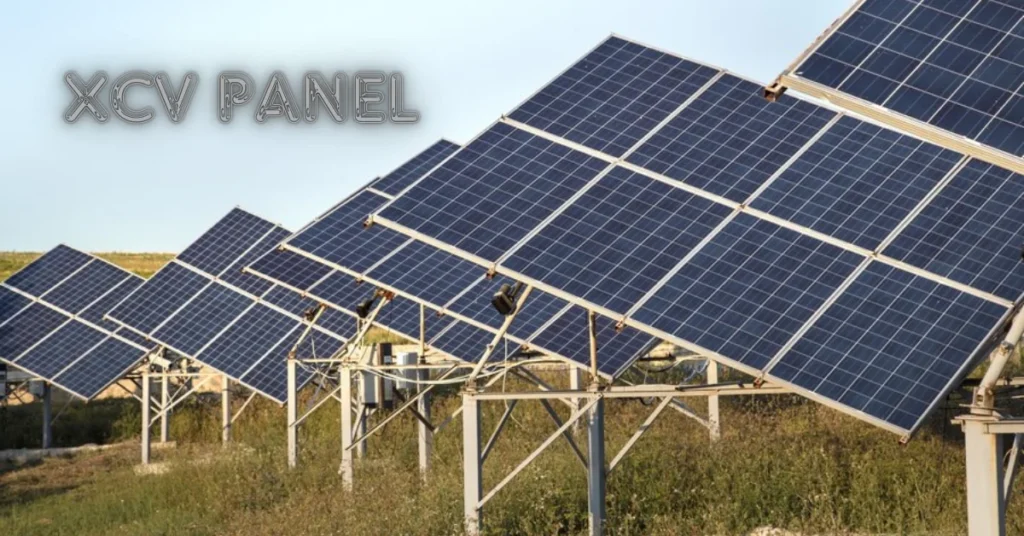Introduction to XCV Panel and its purpose
Welcome to the future of connected living, where technology transforms our homes into interactive spaces that cater to our every need. At the forefront of this revolution is the XCV Panel, a groundbreaking platform designed to enhance how we engage with our environments and each other. Imagine a world where your smart devices communicate seamlessly, optimizing your daily routines and improving your overall quality of life. The concept behind the XCV Panel goes beyond mere convenience; it’s about creating an integrated lifestyle that fosters connectivity and enhances community well-being. As we delve deeper into this exciting realm, we’ll explore emerging trends in connected living for 2022, examine its implications on society, and share insights from industry experts who are shaping this new way of life. Join us as we uncover what lies ahead in the journey towards smarter living through innovation and collaboration!
What is the concept of xcv panel
The concept of connected living revolves around integrating technology into our daily lives. It transforms how we interact with our environment, making everything smarter and more efficient.
Imagine a home where the thermostat learns your preferences and adjusts automatically. Or lights that respond to your presence, dimming when you sit down to watch a movie.
This interconnectedness extends beyond homes. Entire communities can be linked through smart infrastructure—traffic systems that optimize flow based on real-time data or parks equipped with sensors to monitor air quality.
At its core, connected living aims for convenience, sustainability, and improved quality of life. It harnesses devices and applications to create seamless experiences tailored to individual needs.
Embracing this shift requires an open mindset toward change. The future promises exciting possibilities as we adapt our lifestyles to embrace these advancements in technology.
Top trends in Connected Living for 2022
The landscape of connected living is evolving rapidly. In 2022, smart home technology has taken a front seat, with devices seamlessly communicating to enhance convenience and comfort.
Sustainable living is becoming increasingly prominent. People seek energy-efficient solutions that connect their homes to renewable resources. Solar panels and smart thermostats are leading the charge in this trend.
Health and wellness tech also gained traction this year. Wearable devices monitor vital signs while syncing with home systems for comprehensive health management.
Another notable shift is the rise of community-based connectivity. Neighborhoods are embracing shared technologies, like communal Wi-Fi networks or local environmental monitoring systems, fostering collaboration among residents.
Privacy concerns have led to a demand for more robust security features in connected devices. Users want control over their data while enjoying the benefits of modern conveniences without compromise.
Impact of technology on Connected Living
Technology has reshaped how we interact with our homes and communities. Smart devices now allow us to control lighting, heating, and security systems all from one app on our phones.
This interconnectedness enhances convenience. You can adjust your thermostat while stuck in traffic or ensure the doors are locked after leaving home.
Moreover, data collection improves efficiency. Homes learn their occupants’ habits over time, optimizing energy usage and lowering bills.
However, there’s a flip side. Increased reliance on technology raises concerns about privacy and data security. Each device connected to the internet becomes a potential target for hacking.
Additionally, the digital divide persists. Not everyone has equal access to these innovations; some communities may be left behind as technology advances rapidly.
Understanding this impact is crucial for creating inclusive connected living environments that benefit all residents rather than just the tech-savvy few.
Advantages and disadvantages of a connected lifestyle
Embracing a connected lifestyle offers numerous advantages. Convenience tops the list. Smart devices streamline daily tasks, from managing schedules to controlling home temperatures with a simple voice command.
Connectivity also fosters stronger community ties. Social media and communication apps help maintain relationships, even across long distances. People can share experiences instantly, creating tighter bonds in an increasingly busy world.
However, there are downsides to consider. Increased screen time can lead to feelings of isolation despite being more “connected.” The pressure to stay updated on social platforms may induce stress for some individuals.
Privacy concerns are significant as well. With almost every device collecting data, users must navigate the fine line between convenience and security risks. Balancing these aspects is essential for anyone looking to fully enjoy a connected life while safeguarding their personal information.
How can individuals and households adapt to a more connected future?
Embracing a connected future starts with awareness. Individuals and households should explore the vast array of smart devices available today. Understanding their functionality is key to making informed choices.
Next, prioritize security. As connectivity increases, so do potential vulnerabilities. Investing in robust cybersecurity measures can help protect personal data and privacy.
Building digital literacy is essential. Engaging with educational resources or community workshops can empower families to navigate new technologies confidently.
Encourage an open dialogue about technology’s role within the home. Sharing experiences, concerns, and tips fosters a supportive environment for adapting together.
Consider sustainability when integrating connected solutions into daily life. Selecting energy-efficient devices not only enhances convenience but also contributes positively to the environment while embracing modern living trends.
Insights from XCV Panel experts
XCV Panel experts bring a wealth of knowledge to the table. Their insights reveal a dynamic landscape for connected living, marked by innovation and opportunity.
They emphasize the importance of user-centric design in technology. Devices must not only connect but also enhance everyday experiences.
Security is another critical focus. Experts urge consumers to prioritize data privacy as they embrace smart technologies. Awareness can mitigate risks associated with interconnected systems.
Sustainability also emerges as a key theme. Solutions that promote energy efficiency and reduce waste are essential for future communities.
Collaboration between tech providers, urban planners, and residents holds promise for advancing connected living initiatives. This teamwork could lead to vibrant communities tailored to individual needs.
These professionals advocate for ongoing education about emerging trends too. Staying informed empowers individuals to make choices aligned with their lifestyles and values.
Case studies of successful connected living communities
One standout example of a successful connected living community is *The Edge* in Amsterdam. This innovative building integrates smart technology with sustainable design. Residents enjoy personalized climate control and energy-efficient systems that adapt to their needs.
In California, the *Vanderbilt* community demonstrates how connected living fosters social interactions. With shared spaces equipped with digital tools, residents can easily organize events or collaborate on projects.
Additionally, *Z-Wave’s EcoSmart Home* in Texas showcases an advanced integration of IoT devices. Homeowners monitor energy usage in real-time while enjoying enhanced security measures that provide peace of mind.
These case studies highlight diverse approaches to connected living, emphasizing both technological benefits and community engagement as essential elements for success. Each initiative demonstrates unique strategies tailored to enhance residents’ lives while fostering a sense of belonging among neighbors.
The role of government and regulations in promoting safe and responsible connected
Governments play a crucial role in shaping the future of connected living. Through regulations, they ensure that technology serves the public interest while safeguarding individual rights.
Policies need to address privacy concerns and data security. This is essential as more devices become interconnected. Clear guidelines help build consumer trust in smart technologies.
Moreover, governments can incentivize innovation by funding research and development in connected solutions. They also have the power to establish standards for interoperability among devices, promoting seamless integration within communities.
Public awareness campaigns further educate citizens about responsible use. By fostering a culture of safety, authorities encourage users to embrace new technologies confidently.
Collaboration between tech companies and policymakers is vital for crafting effective regulations. Such partnerships pave the way for sustainable growth in connected living environments while ensuring ethical practices are upheld across all sectors.
Conclusion
The XCV Panel represents a significant shift towards a more connected future, where technology seamlessly integrates into our daily lives. As we navigate this landscape, understanding the trends and implications of connected living becomes paramount.
With advancements in smart home devices, IoT applications, and community engagement solutions on the rise, individuals have unprecedented opportunities to enhance their lifestyles. However, it’s essential to approach these changes with caution. Balancing convenience with privacy concerns is key.
Success stories from communities embracing connected living illustrate that collaboration among residents fosters innovation and security. Moreover, government regulations must evolve alongside technological advancements to ensure responsible use while promoting growth.
As we look ahead, adapting to this interconnected world requires an open mind and proactive strategies. The insights shared by experts at the XCV Panel provide valuable guidance for anyone eager to embrace a lifestyle enriched by connectivity—one that promises not only convenience but also new ways to engage with one another in meaningful ways.
FAQs
1. What is an “XCV Panel”?
The “XCV Panel” is an innovative platform designed to facilitate connected living by enabling seamless communication between smart devices. It enhances user interaction with technology in homes and communities, promoting convenience and improving quality of life through an integrated digital experience.
2. How does the XCV Panel contribute to sustainability?
The XCV Panel supports sustainability by integrating energy-efficient devices and smart technologies that optimize energy consumption. This allows households to reduce waste and lower energy bills, while also connecting to renewable resources like solar power.
3. What role does security play in the XCV Panel?
Security is a top priority for the XCV Panel. It incorporates robust data protection measures and privacy controls to ensure users can enjoy the benefits of connected living without compromising their personal information. Awareness of potential vulnerabilities is also emphasized.
4. How can communities benefit from the XCV Panel?
Communities can leverage the XCV Panel to foster collaboration and connectivity among residents. Shared technologies, like community Wi-Fi and environmental monitoring systems, enhance communication and support local initiatives, strengthening community ties.
5. What trends in connected living are highlighted by the XCV Panel?
The XCV Panel highlights trends such as the rise of smart home technologies, the importance of health and wellness tech, and the growing demand for community-based connectivity. It also addresses the need for improved data privacy features in an increasingly interconnected world.







